
Welcome, and thanks for coming along!

I'm an architectural photographer. I travel around Britain interacting with special places. I work from my camper van called Woody and I share my experiences via this digest.
⚡️ View the latest digest and the full archive here.

This Digest is free to subscribers and is powered by 123 Members
17 more members will enable another free photo shoot
Member Powered Photography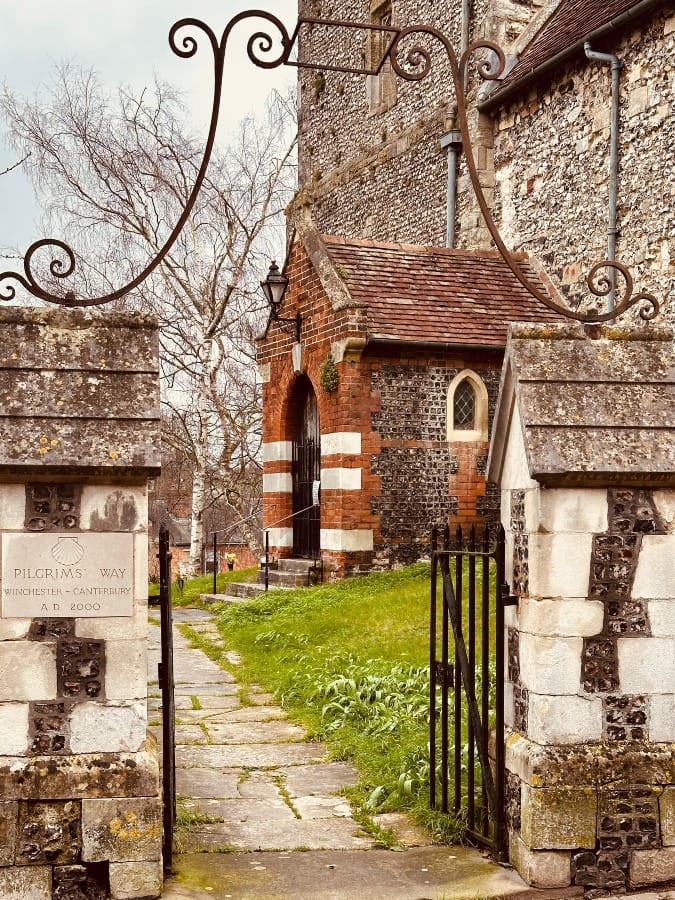
St. John the Baptist Church, St. John's Street, Winchester. On the Pilgrim's Way route that leads to Canterbury and beyond.
'Personality often resides in subtlety and idiosyncrasy. Look closely and often.'
Sue Clifford and Angela King, England in Particular.
Great Streets.

It was my breakdown that gifted me the language of the street. It took me away from Marshall the anxious to Marshall the photographer.
A crisis often leads to new changes in direction, but my salvation was born out of an enforced shift in perspective, a different way of seeing. It is a way of observing that grounds me and makes me feel as though I’ve powered up a level. It feels like being part of a secret society, an unspoken understanding. I’ve encountered engineers with it and artists without it.
Byron reveals it in his poem called Childe Harold:
'To mingle with the Universe, and feel
What I can ne’er express, yet cannot all
conceal.'
Robert Macfarlane in Landmarks saw it in the writer Nan Shepherd, telling us of her body becoming a 'sensorium - and the intellects auxiliary [where] a life of the senses is lived so purely that the body may be said to think.’
To survive the hours after my breakdown, I shifted my consciousness away from the white-hot poker of my mind into a bodily sanctuary. But the feeling was transient, I had to seek it out again and again, and nurture ways of conjuring it up.

My camera led the way.

It became the conduit for progress - the instrument that helped me realise that we have two ways of thinking: for my empirical self - tomes like the Oxford Concise Dictionary might do; for my sensorial self - buildings and light became a profound source of wisdom.

It made it possible for me to tune into the messages that are baked into our streets. This way of seeing focused on a ‘felt sense’ of interacting with the places I visited.
I feel a correspondence with Sonia Overall and the words from her book Heavy Time:
“My creative life is bound up with walking: walking-writing, psychogeography, the layered sensory experience of moving through, and dwelling in, different spaces.”
And so, I find myself on the cusp of a street in Winchester that is as much a sensory experience as a route from A to B, as much a passage of rights as a passageway for cars.
This street is a songline and, through this digest, I am singing it into place.
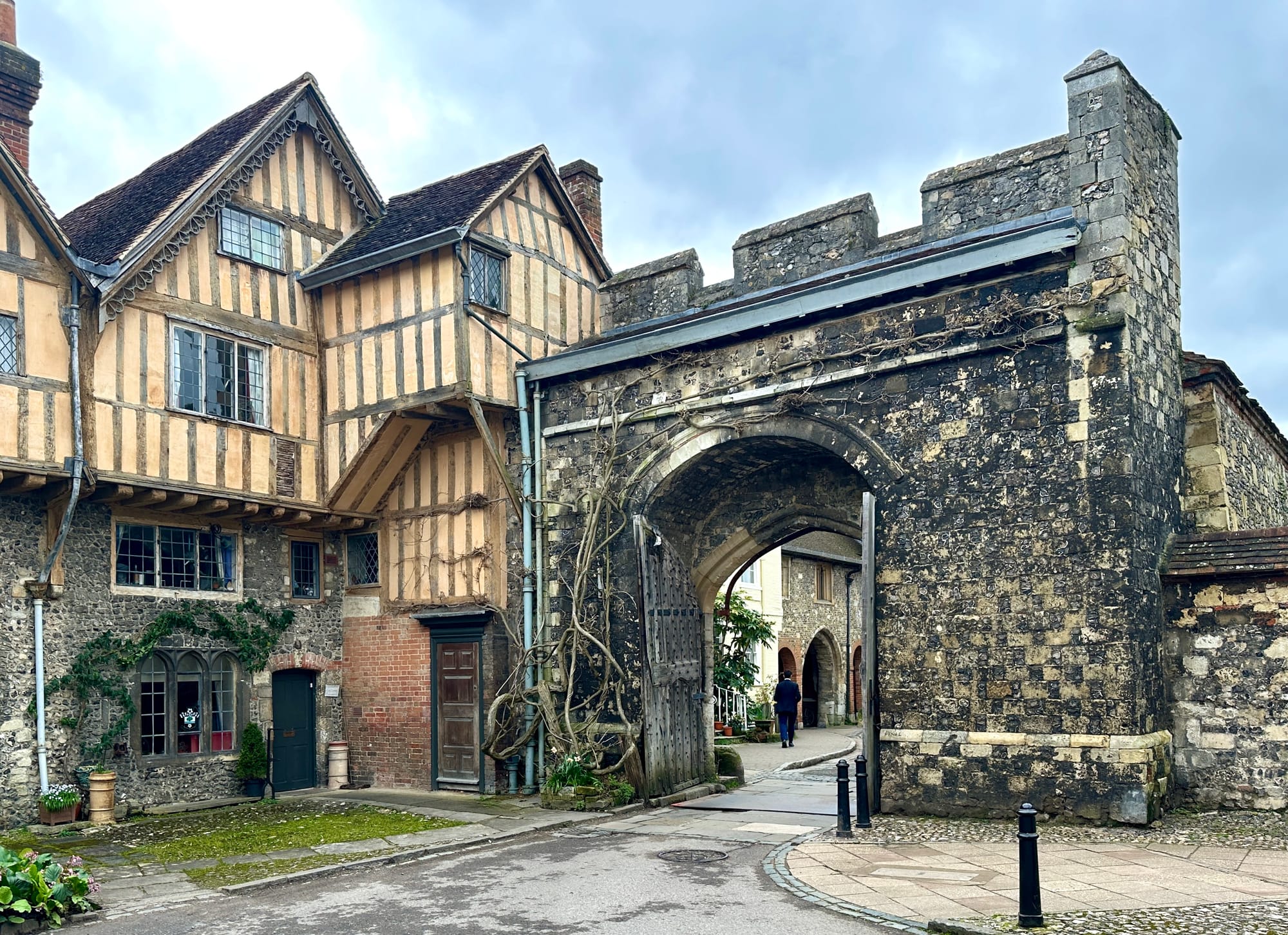

Can you help support my work and keep Woody on the road?
Memberships from £2 per month - thank you.
Explore Member OptionsWinchester Part Two: (Check out Winchester Part One)
A perambulation to remember:
Kingsgate Street/Kingsgate Road/St. Faith's Road/ St. Cross Backstreet.

My route takes me from Winchester Cathedral via the Prior's Gate and on to Kingsgate Street which turns into Kingsgate Road and then St. Faith's Road and St. Cross Backstreet. It is book-ended by two marvellous buildings - Winchester Cathedral:

..and The Hospital of St. Cross:
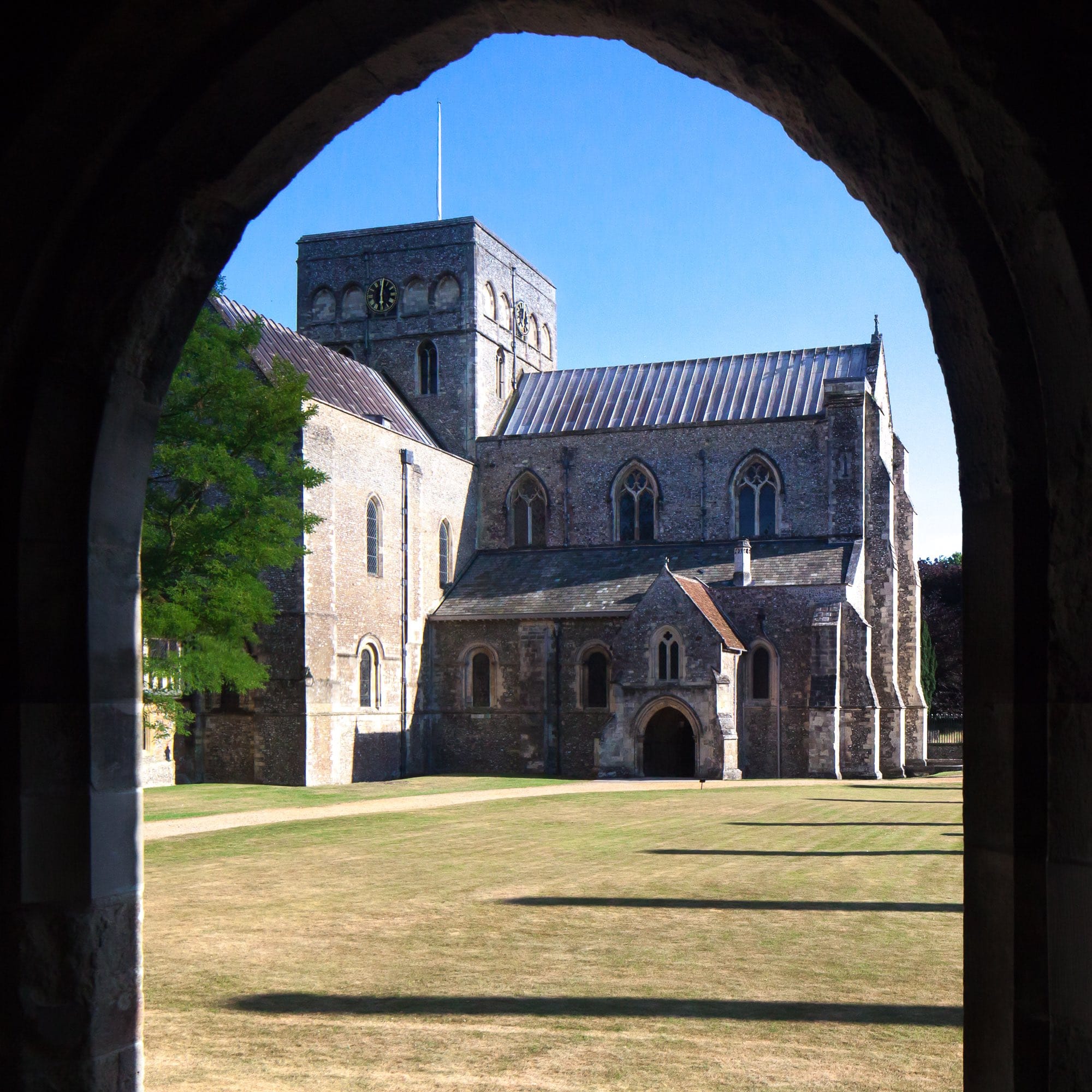
Understanding a street is like cracking a safe - you have to work at it to get to the treasure inside - so take along a Rice's Language of Buildings - the perfect urban companion.
It is about one mile of walking along a fairly flat surface - but, with a bit of knowledge tucked under your belt, how this street springs to life!
Google Maps tells me it should take 24 minutes to walk the route - but I was so taken by the Priors Gate that I sat and sketched in the first lines for half an hour.


Peek through the gate and you'll discover another building nestled beside an elegant Georgian House. This marks the entrance to St. Swithun's Church, dating back to the 16th century. The nave of this church angles back along one of the two surviving 14th-century city gates.
With its peculiar design and historical significance, it stands as one of the most intriguing architectural gems in England.




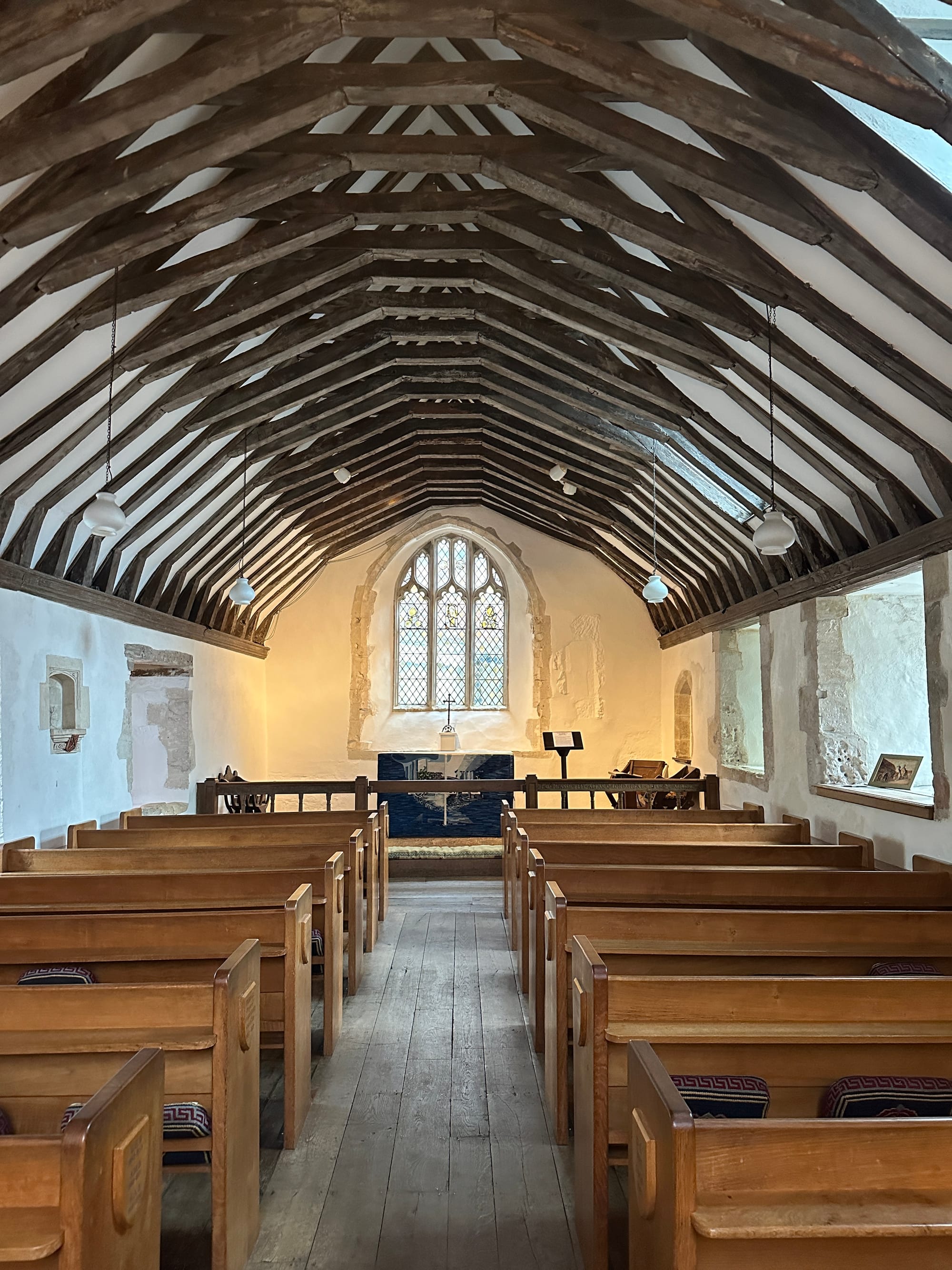
And then on to Kingsgate Street. Grab your Rice's Primer and hang on to your coat tails. The view south is a souffle of architectural styles and materials - richly layered textures.
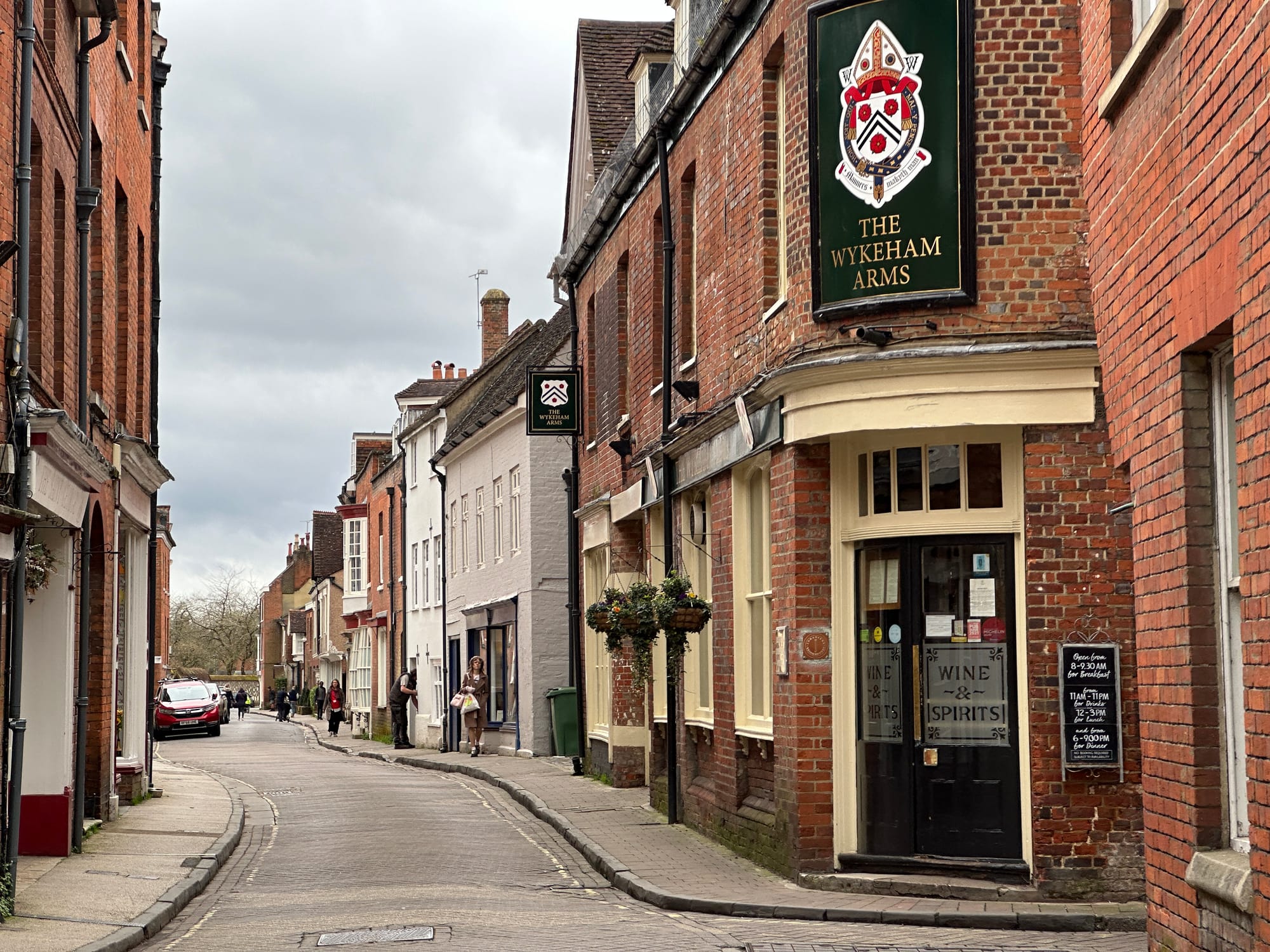
This is a street for people. The way the street bends and curves, the dipping road with its humming setts reminds me of a Dutch Woonerf: a street design that communicates that the street is for people.

Indeed this street teaches. It sends messages about the social norms within the space. Cars slow down, families walk along the centre of the road. When I see a good street with great buildings I sense that it is a community that values itself.

It doesn't take too long for me to be absorbed into the fabric by way of the Wykeham Arms with its mansard roof and Regency doorway.

The interior is a delight. People are warm and welcoming. Away from the tourist hotspots - this place feels like a local.



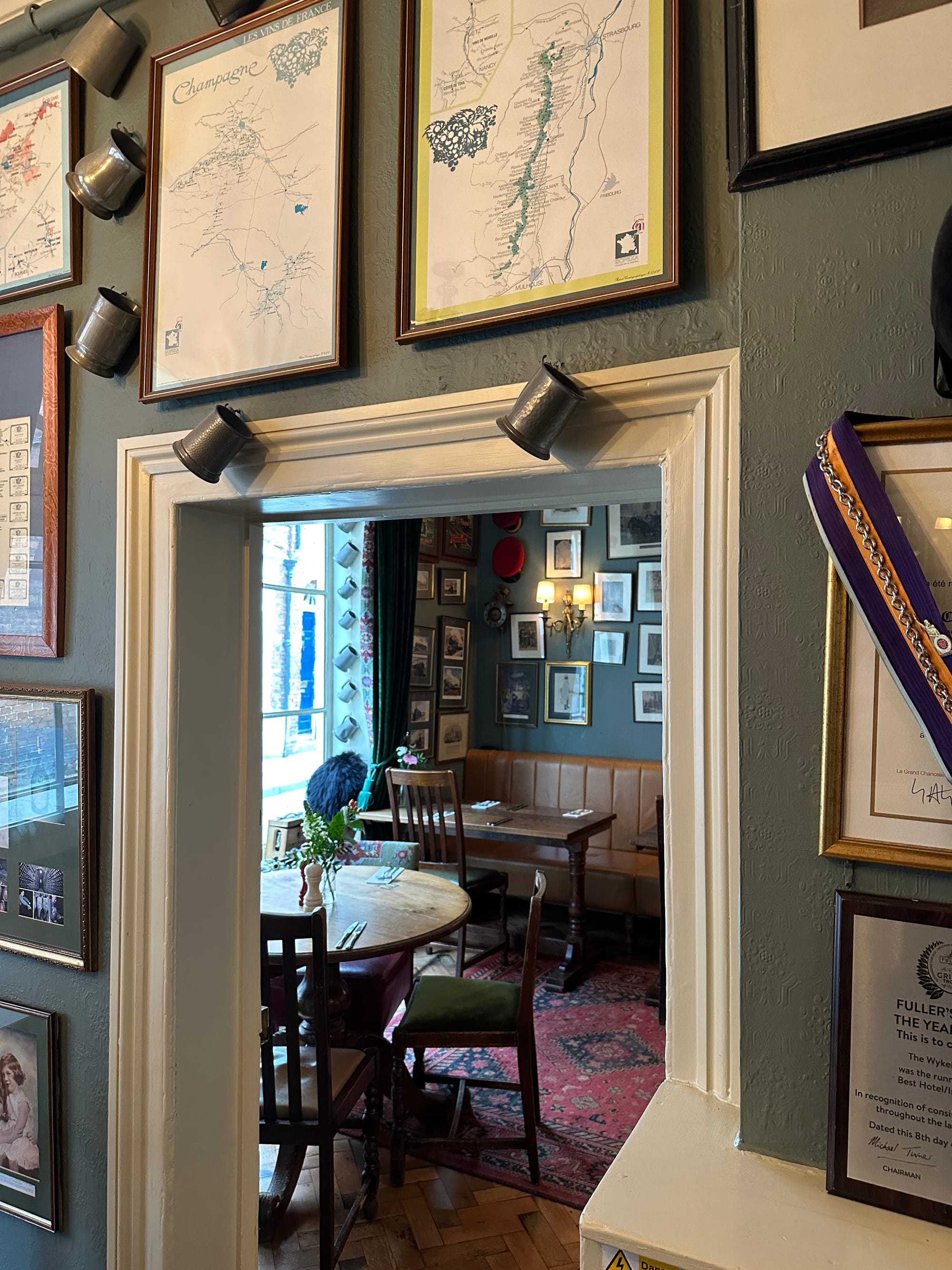


This street is oxygenated with the presence of the past and, after a rousing local ale, as I continue to walk south, I reach for my Rice's Language of Buildings and tap into the street's dialect.

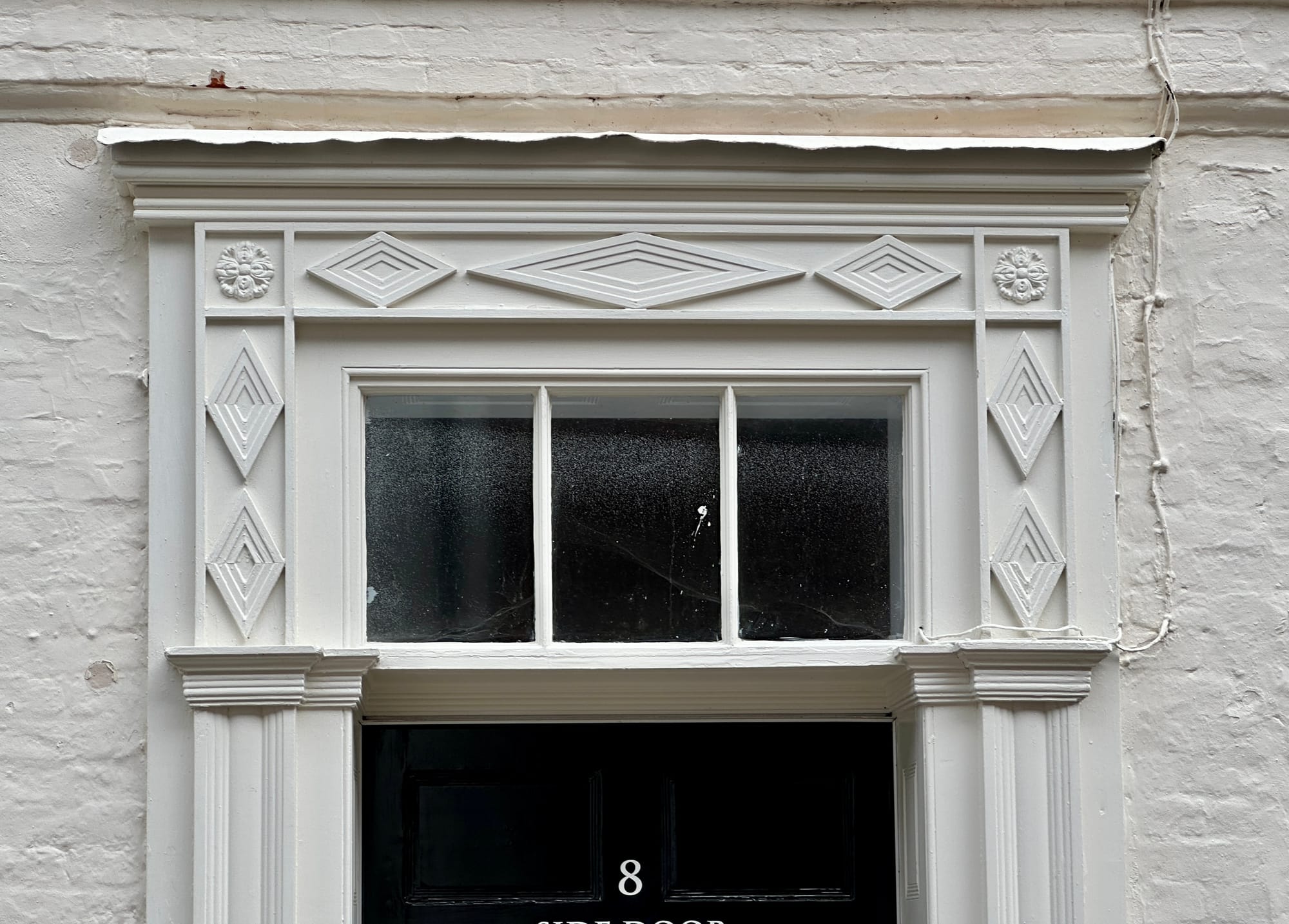

I'm accosted by quoins and hood moulds, entertained by batswing beside bow windows.
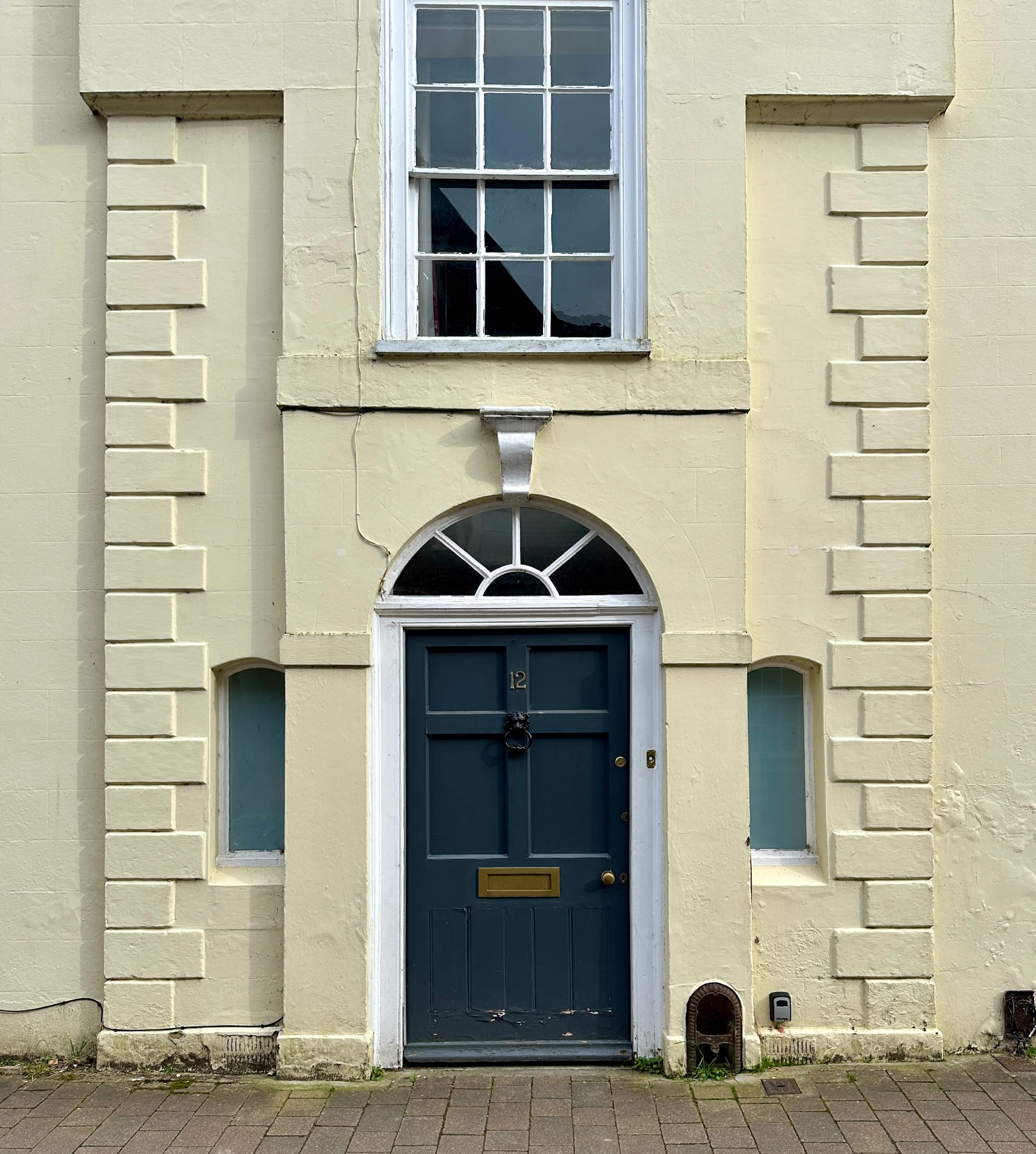

Rice tells me of the aedicule (the door like a little temple)

Around the aedicule, besides its Doric columns, the brick is Flemish bond with burnt headers. Bricks along this street have been laid in several bonds that articulate the status of the buildings they adorn. The walls in this street speak - there is a hierarchy - are you listening?

I hear the whispers in the walls:
'I was once a shop.'
'My owner was a gent.'
'It was here that we became self-conscious about our past.'
'I was built after the trains came to town.'
'I couldn't afford the window tax.'
'My builders preferred fashion over function.'

And the wheels on the cars pass slowly along this street. They hum past the voussoirs and plinths, dentils and balusters, architraves and pediments.

“ There is magic to great streets. We are attracted to the best of them not because we have to go there but because we want to be there. The best are as joyful as they are utilitarian. They are entertaining and they are open to all. They permit anonymity at the same time as individual recognition. They are symbols of a community and of its history; they represent a public memory. They are places for escape and for romance, places to act and to dream. On a great street we are allowed to dream; to remember things that may never have happened and to look forward to things that, maybe, never will."
Allan B. Jacobs. Great Streets.



'My builder thought to let commerce flow - let the burdened carts easily pass. But not without a thought to reference the local vernacular with my flint and limestone. And not without a nod to the latest trend with burnt headers dotted around my walls. '
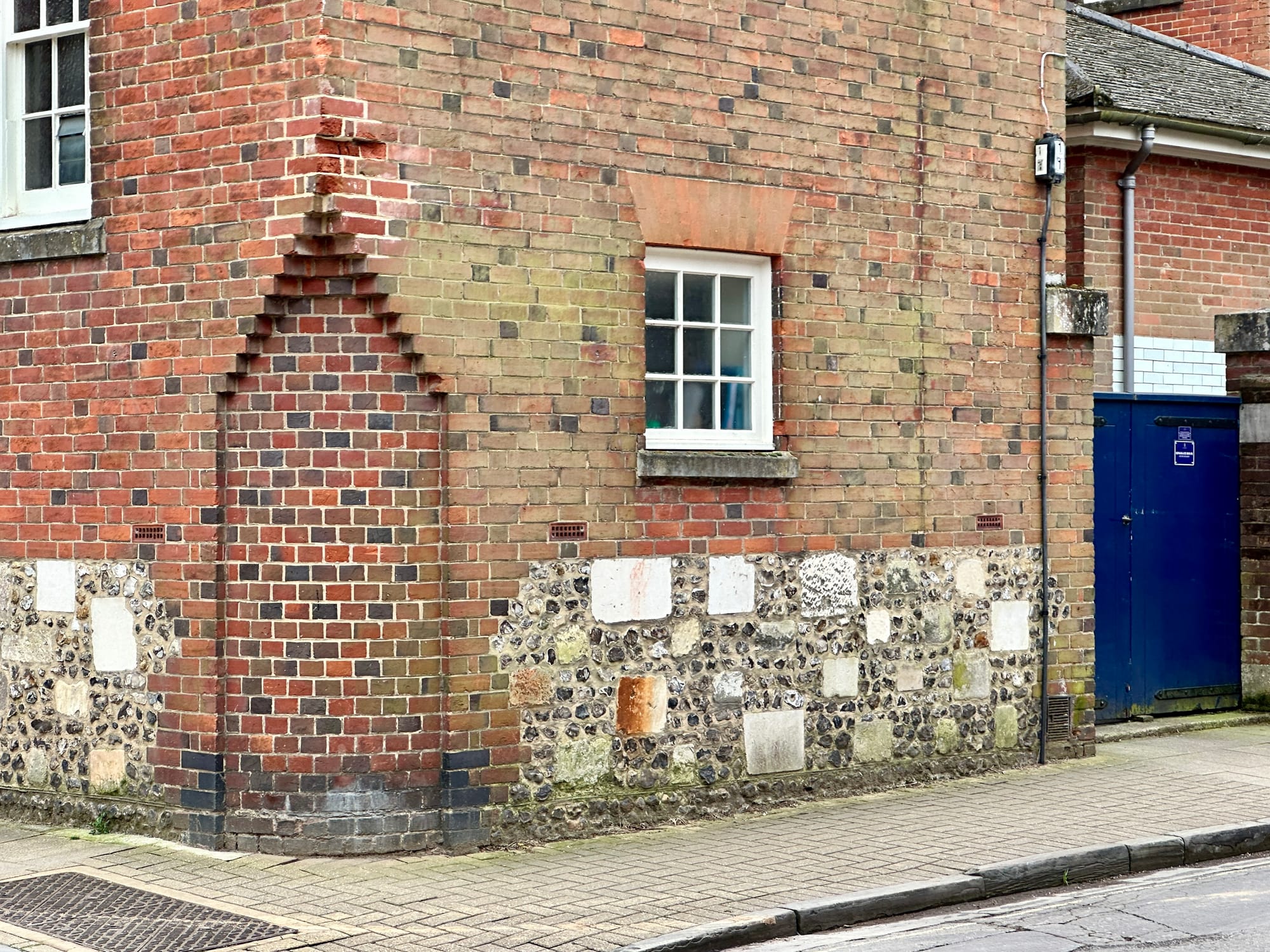


At the junction of St. Faith's Road and St. Cross Back Street is a building that sings. If it were a cat, it would be a tortoiseshell.

The old farmhouse at St. Cross near Winchester originates in the C15th - the chimney added in the C16th.
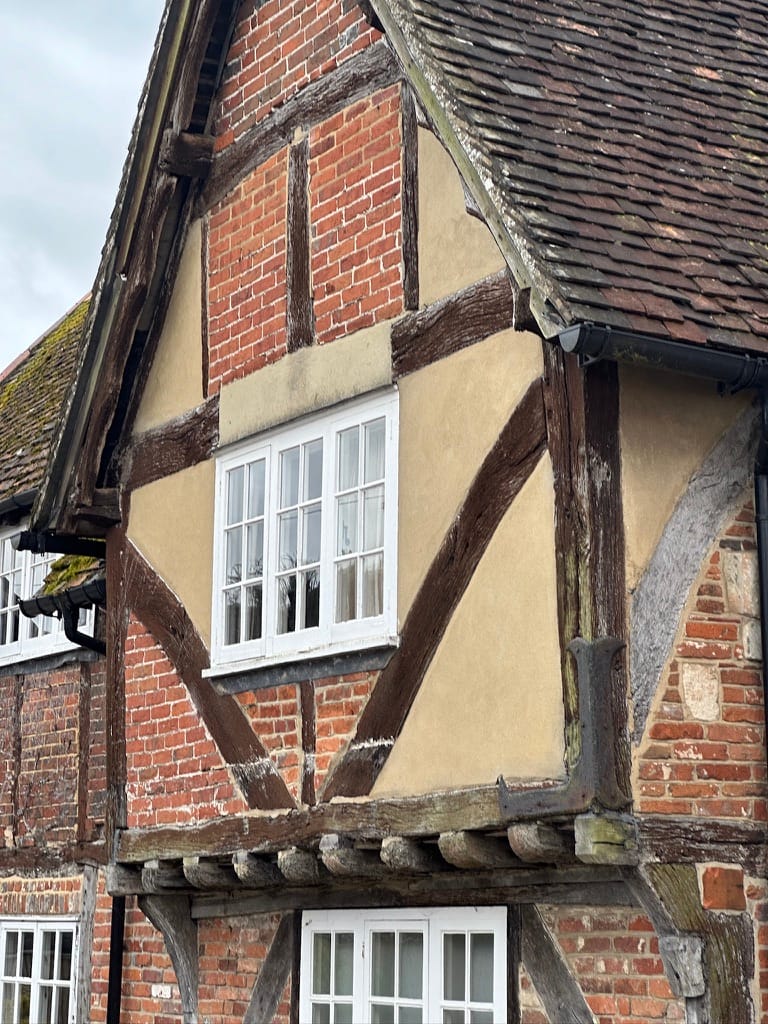

And Rice is all a flutter with queen's posts and arch braces, tie beams and studs.

It's bin day and this street is heading towards a dramatic denouement.

Past the dipping gate..


..and through the arches into the hospital of St. Cross.

The Hospital was founded in the C12th by Henry de Blois, Bishop of Winchester.
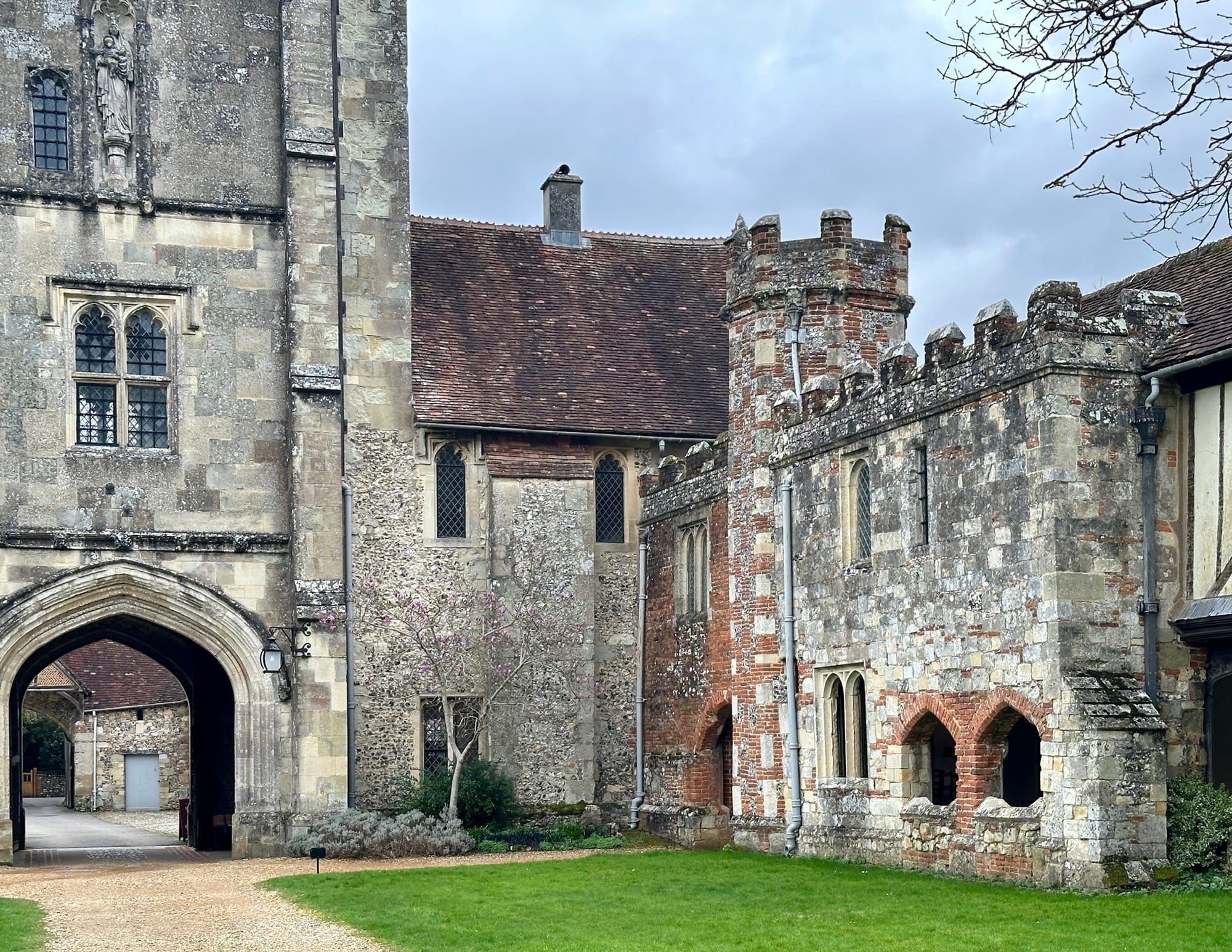

It was in this quadrangle that I was taken by a folly of a building that defied even Rice's primer.


I pencilled in a few lines and finished off the sketch in Woody later. Was struck by how unusual this building looked - the stairs and oriel window on the ambulatory at St. Cross Winchester.

The C15th (and later) quadrangle surrounds a remarkable Transitional Romanesque church of the C12th and C13th.










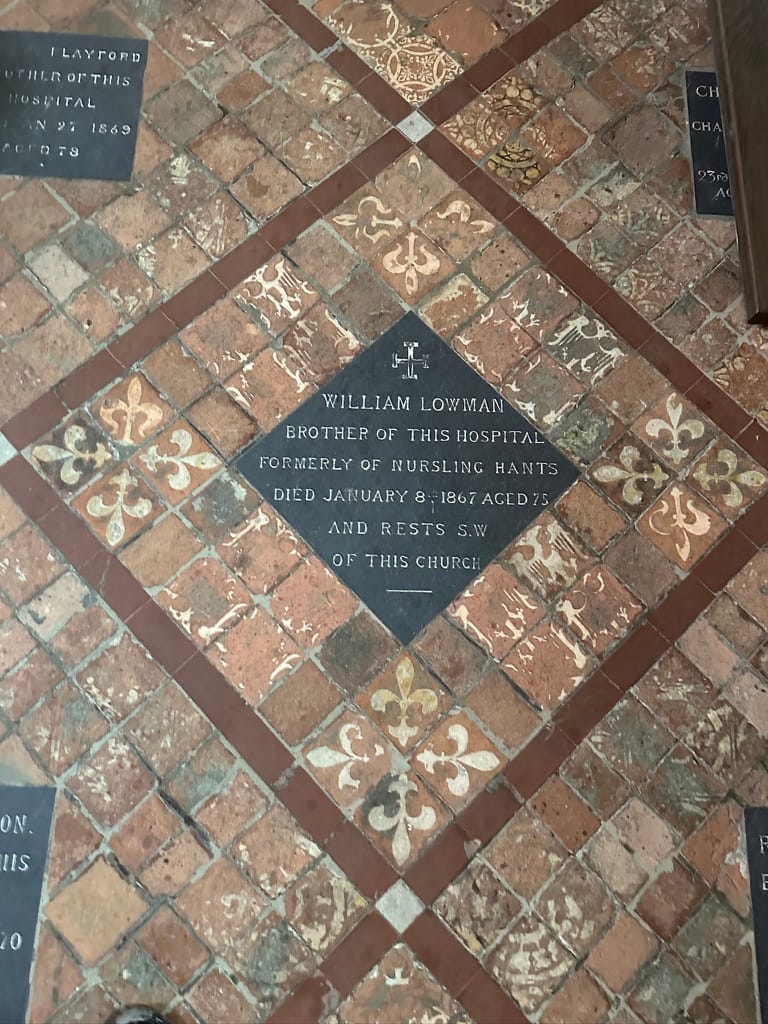



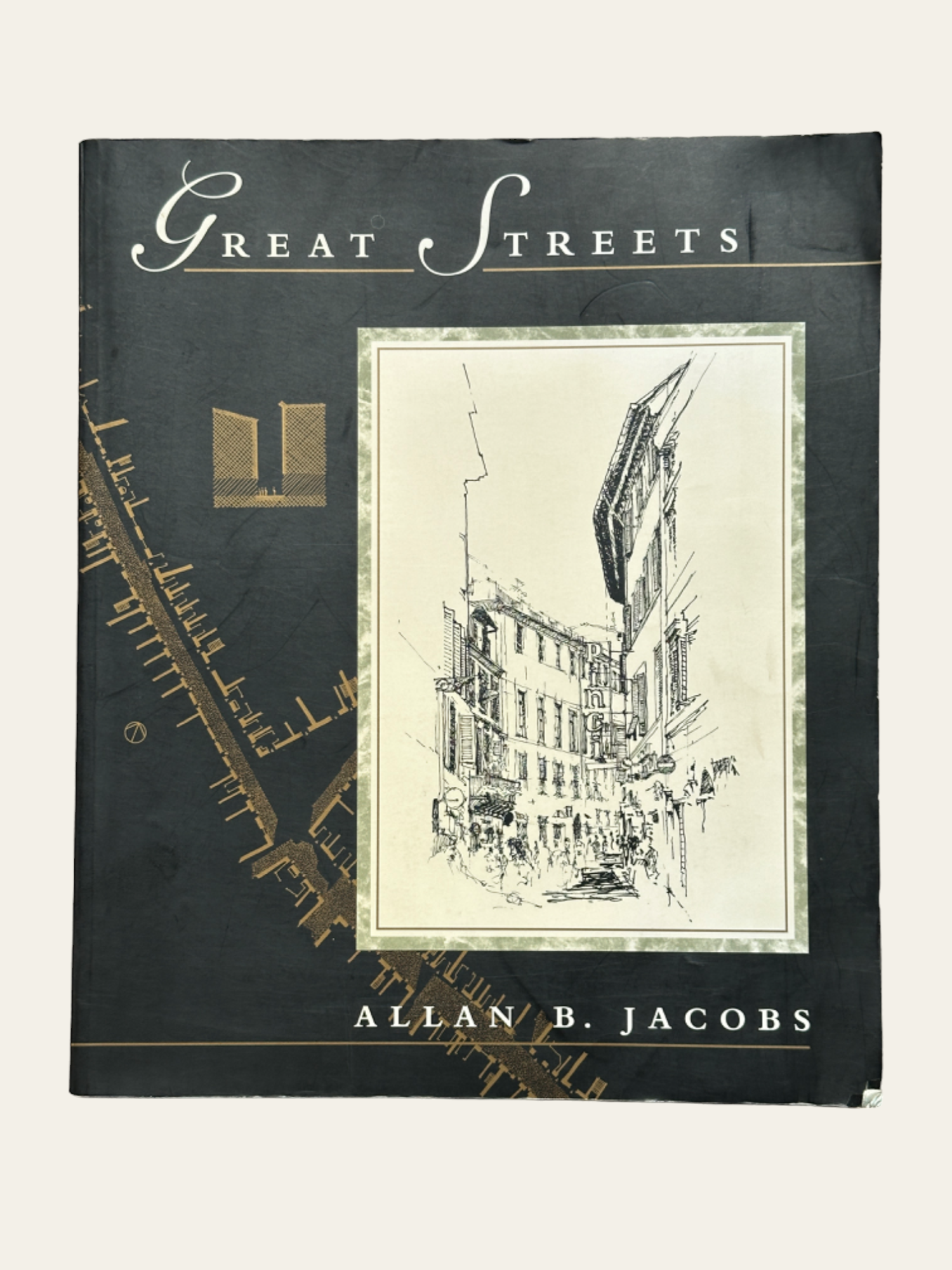

Winchester Part One:



Recent Digest Sponsors:

Bringing Streets Back To Life - Radcliffe, Greater Manchester.

'Once a place loses its distinctiveness, it loses its soul. Distinctive places pay attention to the detail - the roof tiles and windows, the brick banding on a wall, the curious street name, the micro-patterns and patina. Places that record, re-invigorate and celebrate their distinctiveness contribute to the wellbeing of its inhabitants and visitors.’
Sue Clifford and Angela King. England in Particular.
Streets can lose that magic corner or delightful vista, but it is possible to get a sense of place through working with a community and bringing the material culture back to life. I'm very proud to be involved with a project called Spirit of Place in Radcliffe with artists Lee Crocker, Rowan Bridgwood and Coreen Cottam . It was funded and supported by Bury Art Museum.
Pevsner begins his section on Radcliffe in Greater Manchester by noting that it has suffered from the scars of industry more than most.

Our project was to garner the stories behind the material culture in Radcliffe and produce a memory map and art work. The work was not aimed at eradicating 'the scars' but adding meaning to them, thus weaving them into the warp and weft of Radcliffe's identity.
We used the Kintsugi philosophy of filling and repairing scars with gold, thus making the place more valuable than originally.
Our 'gold' was a memory map that tied together the disparate parts of Radcliffe with 'Songlines'. These Songlines followed and connected key routes and celebrated important material culture along the way.

Artists walked the Songlines, and below is an example of our first songline called the Red Cliff Songline which heads out from the parish church into the centre of Radcliffe. Researchers found out stories about the buildings and landscapes along the Songlines.

As a part of that project Rowan Bridgwood and Coreen Cottam designed a textile map which has been made by members of the Radcliffe, Greater Manchester community. This part of the project was called Stitch Your Space. It is a thing of beauty, and has had many stories and memories woven into its fabric.
Imagine the perceived value of a 'Banksy' on a brick wall in a Bristol suburb. Then think through the actual value of a textile that maps out the bounds of a community. A textile that brings disparate and diverse elements of a community together. Through its weave were woven conversations that established friendships and connected people to place in a magical way. Whilst attaching the leaves of identity to the map, people formed attachments to place that will feed into its future.

Here are some photos from the making of the textile map.




The textile map is now at the heart of Radcliffe in the Library - where people can view and relate to the places that were sung back into life. This is a beautiful work of art that has so much depth and resonance - multi-faceted in how it relates to people and place.

The fantastic frame for the textile was made by Men's Sheds Association - Radcliffe branch. A textile that celebrates a place as well as contributing to wellbeing. Here's a link to the local Radcliffe group (Facebook).




I put my heart and soul into the Genius Loci Digest and it takes a day a week to produce. With your support, I’m able to keep this digest free and public facing. 📸🏛🚐



Sponsor a Membership and get your own landing page on the Digest
More information hereThank You!
Photographs and words by Andy Marshall (unless otherwise stated). Most photographs are taken with Iphone 14 Pro and DJI Mini 3 Pro.







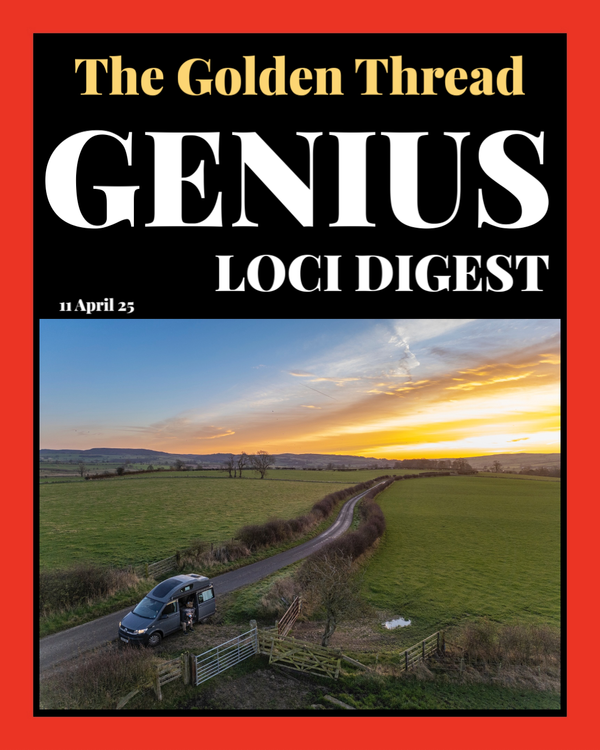
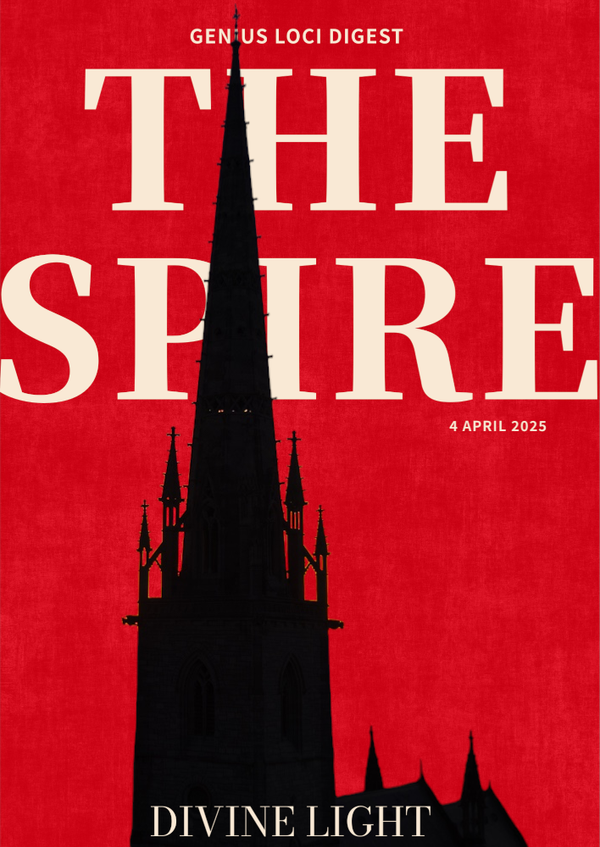
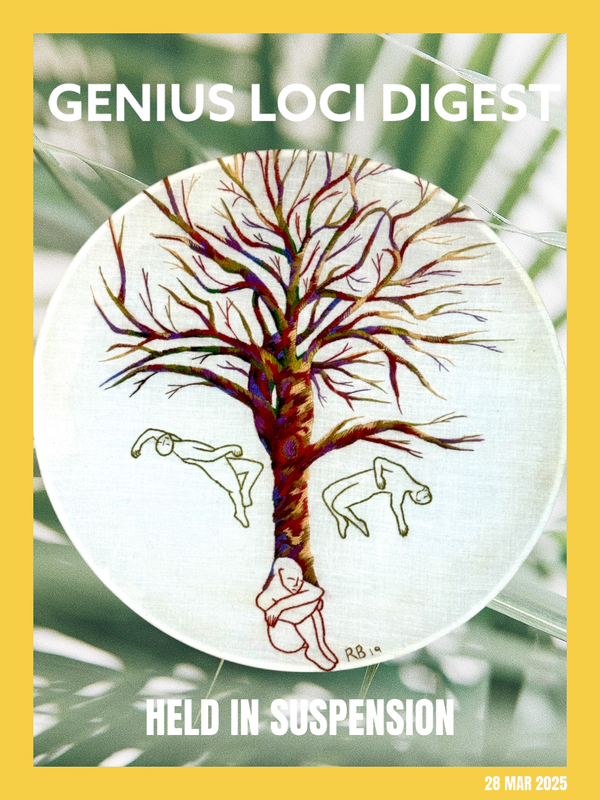
Member discussion